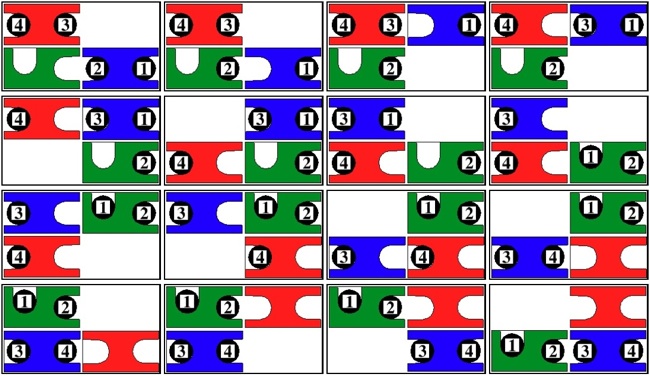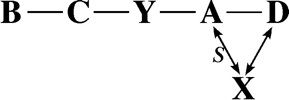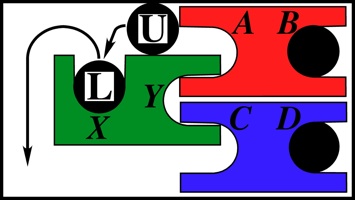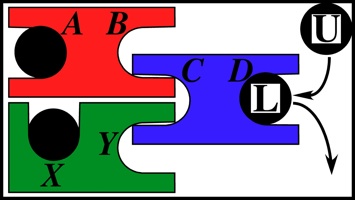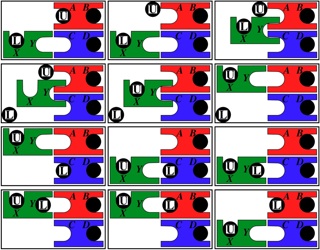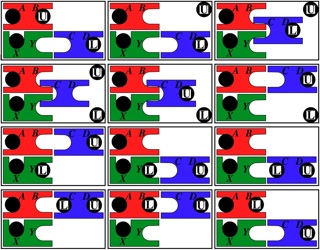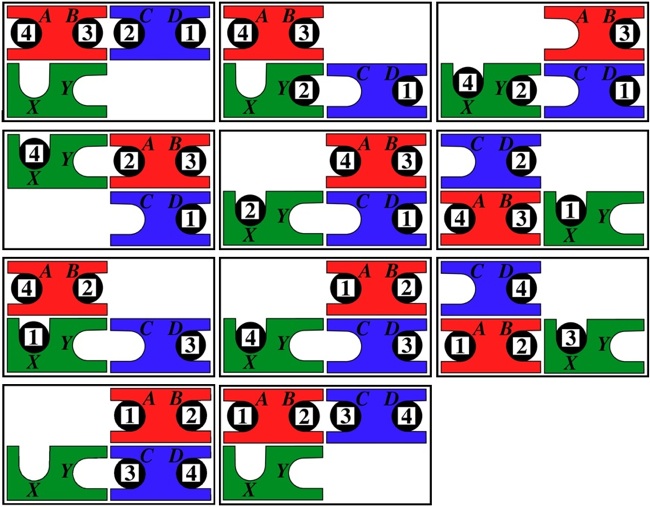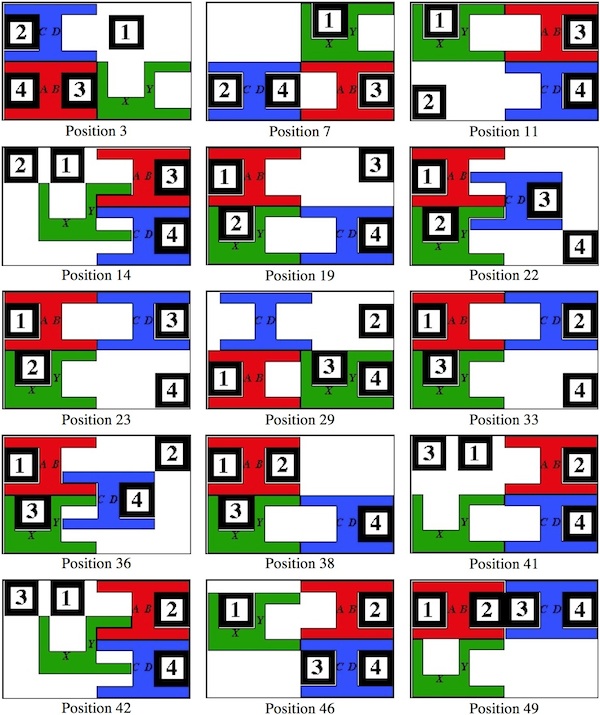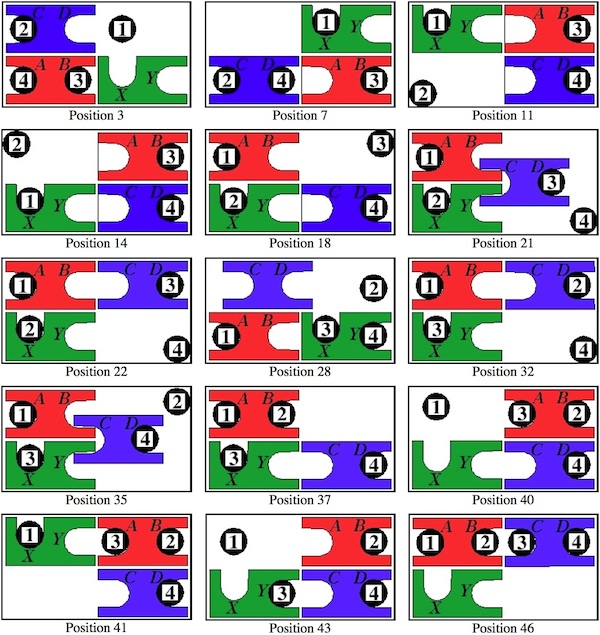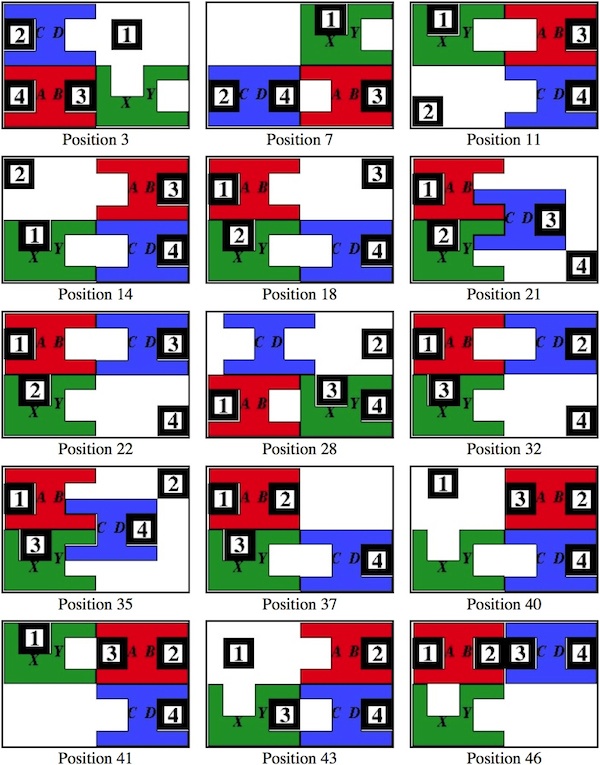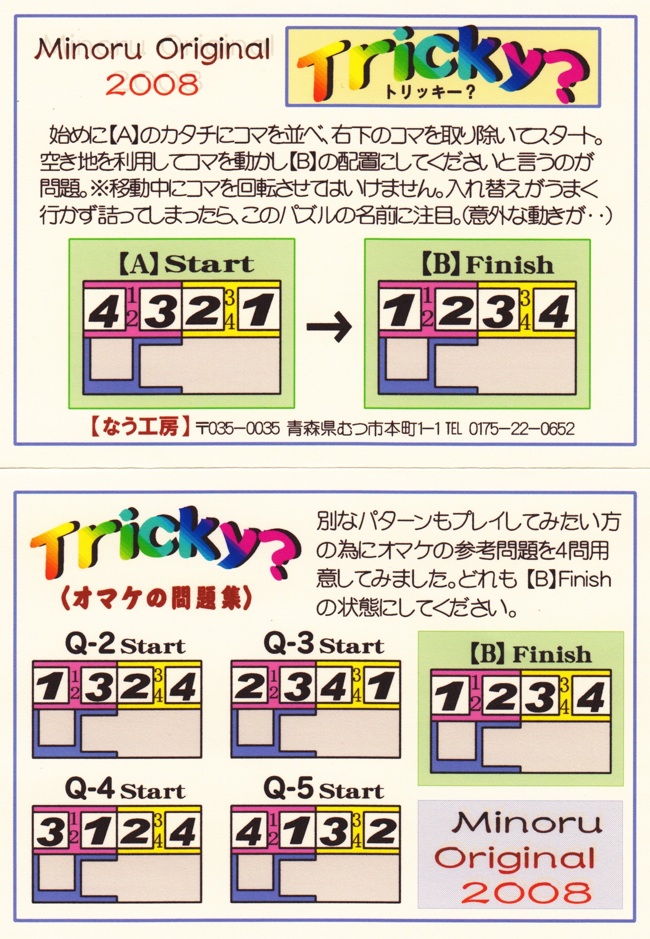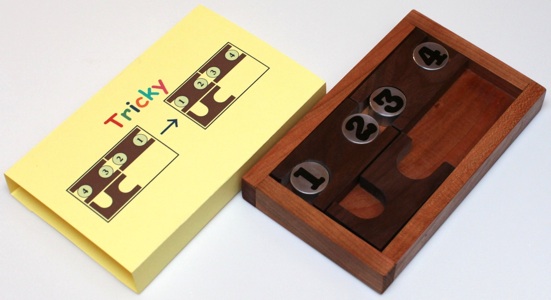
|
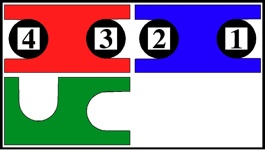
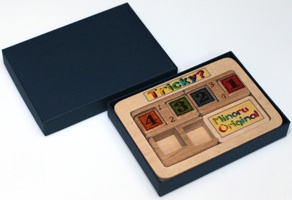
|
left made by J. A. Storer 2009, right purchased in Japan 2010.
(left: Cherry tray with 1/2 inch thick Walnut and aluminum pieces, 4.5" x 7.5" x 1",
right: wood tray, 7 wood pieces, and a wood keeper, 3.3" x 4.7" x 3/4")
A smaller puzzle in the theme of Trap, where here both exchanges and transfers are possible. The Abe puzzle instructions present five problems for arranging the numbers so they read 1-2-3-4 from left to right, the first of which is starting with them in the order 4-3-2-1 as shown on the right above (the other four are to start with 1-3-2-4, 2-3-4-1, 3-1-2-4, or 4-1-3-2). All five problems require that the blocks end up in their original positions (next page). It is a good warm up exercise to first ignore this requirement and solve the easier problem to read 1-2-3-4 on the bottom; starting with the position on the right above, here is a way to do that in 16 moves, using only transfer operations:
